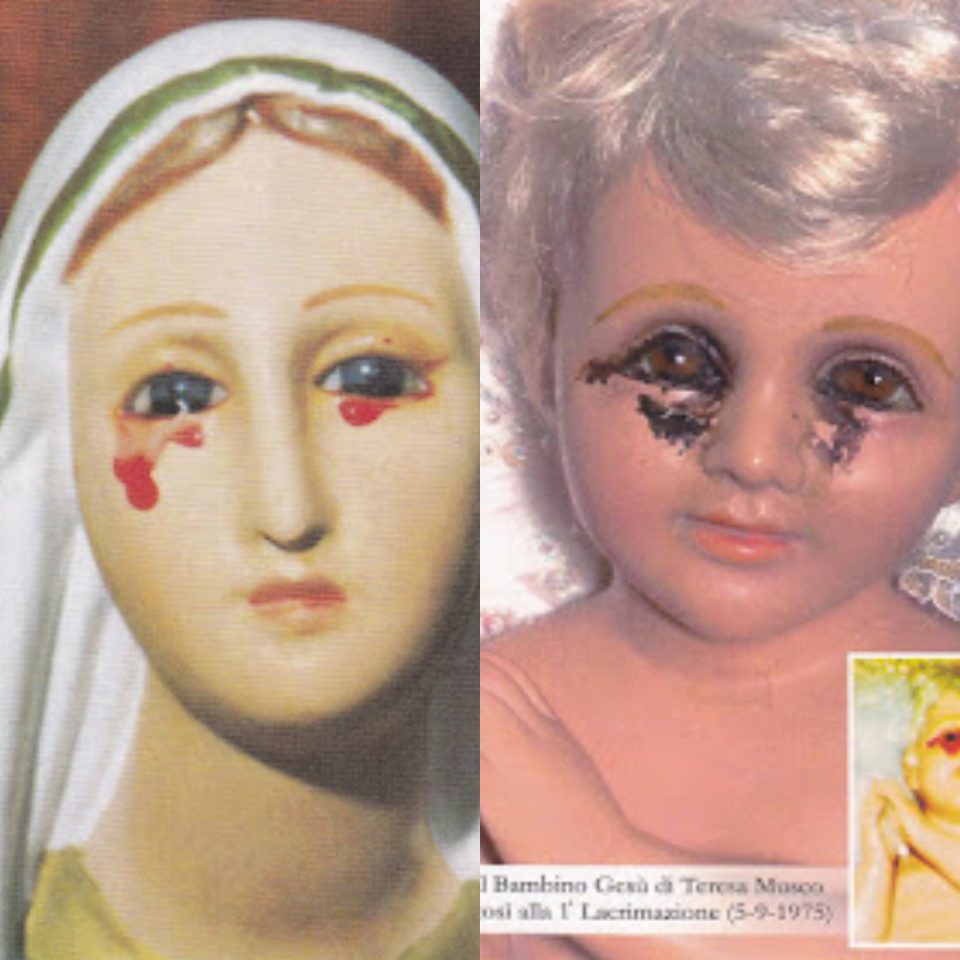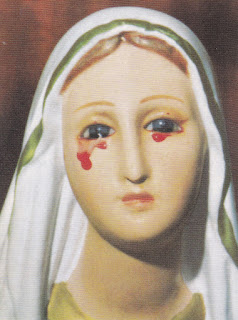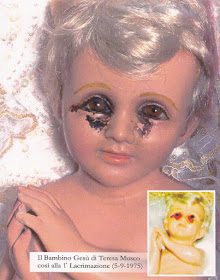Caserta: tears of blood from sacred statues in the house of a mystic

Teresa Musco was born in a small village of Caiazzo (now Caserta) in Italy on June 7, 1943 to a farmer named Salvatore and his wife Rosa (Zullo) Musco. She was one of ten children, four of whom died in childhood, in a typical poor family from southern Italy.
Her mother, Rosa, was a mild and charitable woman who always tried to obey her husband. His father Salvatore, on the other hand, had a warm temperament and was very easily angry. His word was law and one had to obey. The whole family suffered because of her toughness, especially Teresa, who was often at the end of her cruelty.
As other images and even statues began to cry and bleed, she sometimes asked herself confused, 'What's going on at my house? Every day brings a miracle, some people believe and others doubt the reality of big events. I do not doubt it. I know that Jesus does not want to give other messages in words, but in bigger things ... "
In January 1976, Teresa wrote this note in her diary; 'This year started with so much pain. My worst pain is seeing photos that cry blood.
This morning I asked the crucified Lord the reason for his tears and the meaning of the signs. Jesus told me from the cross; 'Teresa, my daughter, there is so much malice and contempt in the hearts of my children, especially those who should set a good example and have greater love. I ask you my daughter to pray for them and to sacrifice yourself unceasingly. You will never find understanding below in this world, but up there you will have happiness and glory ... "
One of the last entries in Teresa's diary, which ended on April 2, 1976, gives the explanation of the Blessed Virgin Mary regarding the tears shed by paintings and statues;
'My daughter, those tears must stir the hearts of many cold souls and also of those who are weak in will. As for others who never pray and consider the fanaticism of prayer, know this; if they don't change course, those tears mean their damnation!
Over time, the phenomena occurred several times a day. Statues, paintings "Ecce - Homo", crucifixes, paintings of the child Jesus, paintings of the Sacred Heart of Christ and paintings of the Virgin Mary and others shed tears of blood. Sometimes the bloodshed lasted for a quarter of an hour. Looking at them, Teresa was often moved to tears and asked herself: "Could I be the reason for these tears too?" or "What can I do to ease the pain of Jesus and his Most Holy Mother?"
Surely this is also a question for each of us.

